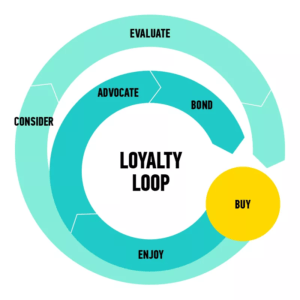This week’s roundup includes the challenges of tech businesses failing, differentiating your brand, tools for planning 2017, and how to align product and marketing teams.
The relentless march of technological improvement means that by their very nature technology businesses fail.
Intercom
Getting into a technology startup seems like the thing to do in today’s hi-tech world, but the reality is, there is more failure and death in technology than there is success and survival.
“It is the nature of our industry, it is the nature of technology, that every product dies. That’s a very morbid thought, but if you don’t believe me on that, page me, or fax me, or write me up something on your typewriter. They were all epic businesses once upon a time, but they are no more. Put another way, we have to make it work, we have to make it grow, and then we have to keep it relevant.”
So how do you stay relevent ins the ever growing and changing and advancing world of technology? Especially when it seems the changes are happening faster and faster? This article is broken into three parts to help answer that question:
(1) Only the Paranoid Survive
(2) Why You Can’t Ignore Technology Trends
(3) Keeping Your Product Alive

4 Ways to Differentiate Yourself and Your Brand
Inc.
Let’s hope the term “content marketing” is not new to you, but if so, this is the first step in differentiating your brand. Marketers now lead with content and you should as well. How exactly do you do that and stand out?
“As the barrier to building content decreases, it is easy to see the negative side of this too,when consumers get overwhelmed with information overload. When consumers see the same messages continually, they pay less attention.”
This article highlights four ways you can stand out: (1) Switch to video (2) Be authentic (3) Offer consistency (4) Provide value [Read more here.]

3 (Free) Tools to Help SaaS Founders with Their 2017 Planning
Christoph Janz
With December’s arrival and the holiday season in full swing, 2016 might as well be over and done with; therefore, it’s time to start looking to 2017, if you haven’t already. Researching and discovering new tools to better your business is a healthy habit to stay in throughout the entire calendar year, but it would be wise to kick off 2017 with some new tools in place. This article offers tools for a growth calculator, a sales team hiring plan, and financial planning. [Read more here.]

How aligning product and marketing teams improves customer experience
Mind The Product
As businesses grow, oftentimes departments become silos, working independently of each other and missing great opportunities to not only collaborate, but also learn from each other and better the end results for both the business and the customer. Certain areas of a business are fine left separate, but in the case of marketing and product management, the two can overlap for a great relationship.
“I’ve worked on the teams of several SaaS products in a dual marketing/product management capacity, and have seen first-hand the overlapping work that exists between crafting a compelling brand, and building a product that people love. In doing so, I’ve witnessed the benefits gained when a cosy relationship develops between marketing and product teams, especially in fast-moving start-up environments.”
This article describes why the two, marketing and product management, must work together and how to align them. [Read more here.]

Video of the Week:
Tweet of the Week:
The Anatomy of a #Data-Centric #Business [Infographic] #Bigdata #SaaS #Cloud #SocialMedia #Marketing pic.twitter.com/KD82YpnqSn
— R Srikanth (@srikanthr4080) November 30, 2016

